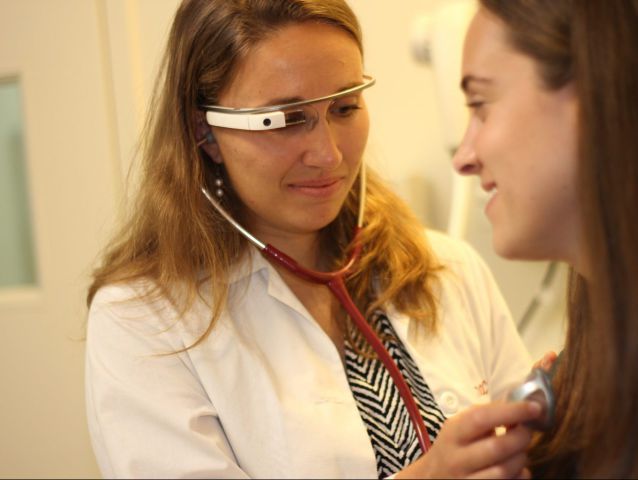
The next time you spot a Google Glass in the wild, it might not be on the face of a fervid techie. It might be on your doctor. Augmedix, one of several startups that formed around the computerized headgear — and kept spinning after the search giant ditched its first attempt — is raising a fresh round of capital to get Google Glasses into more healthcare facilities.
The four-year-old startup is part of a wave of Silicon Valley companies trying to tap the massive medical market. It primarily builds software for wearable devices that display electronic health records so that doctors can access them hands-free.
“They’re engaging with patients in front of them,” said CEO Ian Shakil. “In the background, we’re doing all the burdensome work.”
He’s not raising cash from Sand Hill Road. Instead, the $17 million strategic investment comes from a quintet of medical institutions — Sutter Health, Dignity Health, Catholic Health Initiatives, TriHealth Inc. and an unnamed one. (A year ago, Augmedix raised a $16 million Series A round led by DCM Ventures.) Collectively, these groups represent over 100,000 healthcare providers.
The company is one of ten official Google Glass for Work partners, a program that has trucked along amid the product’s struggles.
To recap: After its massive consumer flop, Glass “graduated” from its home inside Google X, shifting clumsily back to Google and under the leadership of Tony Fadell (who doubles as Nest CEO). Staff left. But its Work program, which ships Glass hardware for various enterprise applications, has continued. As we reported last summer, the team behind Glass — now called Project Aura — is developing a new version for enterprise uses, along with some sort of consumer 2.0 product.
When Glass was first developed, sources said some Googlers thought they should ship to workplaces before consumers, arguing that workplace applications, like healthcare, would be a wiser first step (or perhaps anticipating the infamous “Glasshole” issue). Augmedix would agree. It claims that 98 percent of patients polled are okay with augmented reality devices perched on their doctor’s face.
“This thing is just yet another medical device in the cacophony of devices that your trusted doctor uses with you,” Shakil said. “It’s very different than the experience of going to a bar in San Francisco and seeing a guy with Glass.”
Augmedix sells its services using a variety of hardware products, although Glass dominates. Most of these are the initial Glass versions, but Shakil said they are in “field tests” with other “next-gen” versions.
